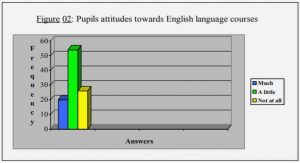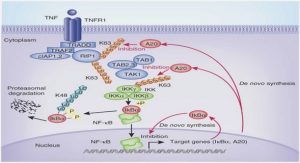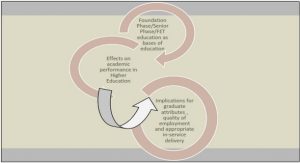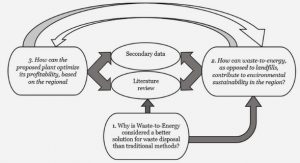Get Complete Project Material File(s) Now! »
From mass production to lean production
According to Srinivasan (2004), the first automobile manufacturing in the world were two Frenchmen, Rene Panhard and Emil Levassor, who obtained a license to build engines from Daimler in 1889. The next year they had built a car. Since they saw no future in the business they sold the business to Armand Peugeot. More and more car manufactures were establishing in the market in Europe and US. However, all of them had used craft production and cars were produced small volumes. Henry Ford was the first mass producer in the US who changed the manufacturing world by introducing the concepts of flow and throughput velocity. The aid of the concepts was the moving-assembly line that sharply reduced the assembly time. Ford had a goal to reduce waste not just within the factory but also across the entire supply chain. The removal of waste allowed reducing the production costs that benefited customers. However, Ford incurred high cost from manufacturing details, which cost the company thousands of dollars. Due to the promoting only a standard model with a single color Ford lost the market share to General Motors’ Chevrolet. General Motors had modified the principles of mass production and could offer the different models every year (Srinivasan, 2004).
Value Stream Mapping
According to Seth and Gupta (2005), Value Stream Mapping (VSM) is the process of mapping the material and information flows for components and sub-assemblies in a value chain from raw material to the customer. Womack and Jones (1996) define VSM as a tool, which allows identify ways to get material and information to flow without interruption, improve productivity and competitiveness, and help people implement system rather than isolated process improvements (cited in Emiliani & Stek, 2004). Womack & Jones (1996), and Rother & Shook (1999) described value-stream maps as “material and information flow maps”, which are one-page diagrams showing the processes used to make a product (cited in Emiliani & Stek, 2004). VSM is used to identify the sources of waste in the value stream as basis for implementation plan that helps to see and focus on flow with a vision of and ideal (CMTC, 2003). VSM is a mapping paradigm used to describe the configuration of value streams and it maps not only material flows but also information flows that signal and control these material flows (Rother & Shook 1999).
Additional Value Stream Mapping tools
Harrisson and van Hoek (2005) state that by mapping processes along the supply chain, it is possible to classify the value added and non-value added activities in the performed activities such as transportation, storage, inspection or delay. Moreover, Hines and Rich (1997) argue that supply chain mapping tools help to provide visibility along the value stream and companies can choose improvement activities to achieve the maximum benefit. Big picture mapping means a visual approach designed to display at a high level a major part or whole organization. Mapping the big picture of value stream captures the overall value stream including information and physical flow. However, gaps exits in the big picture mapping, and further detailed value stream mapping work is required to fill in the gaps left by big picture mapping (Hines & Taylor, 2000). There are seven mostly used mapping tools: 1) Process Activity Mapping, 2) Supply Chain Response Matrix, 3) Production Variety Funnel, 4) Quality Filter Mapping, 5) Demand Amplification Mapping, 6) Value Analysis Time Profile, and 7) Decision Point Analysis (Hines & Taylor, 2000).
Lean principle – Pull scheduling
The forth lean principle is pull scheduling means producing products only in response to a signal from the customer that it needs more products. This implies that demand information of customers’ orders has to be available across the supply chain. If it is possible, a company should deliver products from manufacturing facilities, not from stock, and use customer orders prior to forecasts (Harrison & van Hoek, 2005). There exist two types of production control systems: “Pull” and “Push” systems. In the pull the system the products are “pulled through the chain in response to demand from the end-customer. This contrasts with a push system, where products are made … in response to central plan or schedule” (Harrison & van Hoek, 2005, p. 157). Push systems are widely used for Materials Requirements Planning (MRP) and for Manufacturing Resources Planning (MRP II) systems. Thus, the push system is totally based on planning and forecasting. The pull system does not schedule the start of work, instead authorizes production (Coyle et al., 2003). Thus, the pull system is based on customer orders.
Lean principle – Seek Perfection
Four lean principles (described above) are used to perform the fifth principle, seek perfection. It can be performed by getting better at everything, i.e. eliminating waste at every step (Harrison & van Hoek, 2005). According to Womack and Jones (1996) “there is no end to the process of reducing effort, cost, and mistakes while offering a product which is ever more nearly what the customer actually wants” (cited in Koskela, 2004). In other words, there is continuous approach of waste minimization and value maximization by maintaining and improving the working standards through small, gradual improvements. Continuous improvement is associated with JIT and TQC (Total Quality Control) systems (Koskela, 2004). There are two paths enable to pursue perfection: Incremental improvement and Radical improvement (Womack & Jones, 1996; Tushman & O’Reilly, 1996). In lean terminology kaizen stands for the incremental improvement and kaikaku stands for the radical improvement. To perform both types of improvement the management of a company first, needs to apply the four lean principles that were described before, to form the view of the “perfection”. Second, the management has to decide what type of muda to hit first. The combination of both changes a company will be able to increase productivity, decrease inventories, errors, and lead times (Womack & Jones, 1996).
Table of Contents :
- 1 INTRODUCTION
- 1.1 BACKGROUND
- 1.2 SPECIFICATION OF PROBLEM
- 1.3 PURPOSE
- 1.4 RESEARCH QUESTIONS
- 1.5 DELIMITATION
- 1.6 DISPOSITION OF THESIS
- 2 FRAME OF REFERENCE
- 2.1 FROM MASS PRODUCTION TO LEAN PRODUCTION
- 2.2 LEAN THINKING
- 2.2.1 Application of lean thinking to business processes
- 2.3 LEAN PRINCIPLE – SPECIFY VALUE
- 2.4 LEAN PRINCIPLE – IDENTIFY THE VALUE STREAM
- 2.5 LEAN PRINCIPLE – MAKE VALUE FLOW
- 2.5.1 Value Stream Mapping
- 2.5.2 The three types of activity
- 2.5.3 Wastes
- 2.5.4 Additional Value Stream Mapping tools
- 2.6 LEAN PRINCIPLE – PULL SCHEDULING
- 2.7 LEAN PRINCIPLE – SEEK PERFECTION
- 2.8 POSTPONEMENT
- 2.9 POSITIONING AN ORGANIZATION IN TERMS OF SUPPLIER RELATIONS
- 2.10 SUMMARY OF THE THEORETICAL BACKGROUND
- 3 METHODOLOGY
- 3.1 INDUCTION VS. DEDUCTION
- 3.2 CASE STUDY
- 3.3 DATA COLLECTION
- 3.3.1 Interviews
- 3.3.2 Observations
- 3.3.3 Secondary data
- 3.4 TRUSTWORTHINESS
- 3.4.1 Validity
- 3.4.2 Reliability
- 4 EMPIRICAL STUDIES
- 4.1 THE DEVELOPMENT OF HAGS ANEBY AB
- 4.2 PRESENT-DAY HAGS
- 4.2.1 Products of HAGS
- 4.2.2 Introduction of the product family
- 4.3 THE VALUE SUPPLY CHAIN OF ORIGO AT HAGS
- 4.3.1 Supplier X
- 4.3.2 HAGS mechanical workshop
- 4.3.3 QPC
- 4.3.4 LTN
- 4.3.5 Outbound Logistics Companies
- 4.3.6 Customer
- 4.4 ORDER FULFILLMENT PROCESS
- 5 ANALYSIS
- 5.1 SPECIFY VALUE
- 5.2 IDENTIFY THE VALUE STREAM
- 5.3 MAKE VALUE FLOW (I): ANALYSIS OF THE CURRENT STATE MAP
- 5.4 IDENTIFICATION AND ANALYSIS OF WASTES IN THE FLOW OF ORIGO
- 5.4.1 Waiting
- 5.4.2 Transportation
- 5.4.3 Unnecessary Inventory
- 5.4.4 Unnecessary Movement
- 5.4.5 Defects
- 5.5 FURTHER ANALYSIS OF THE CURRENT STATE MAP
- 5.5.1 Postponement and Decision Point Analysis
- 5.5.2 HAGS positioning in terms of relationship
- 5.6 MAKE VALUE FLOW (II): SOLUTIONS TO REDUCE THE WASTES AND THEIR INFLUENCE
- 5.6.1 Waiting
- 5.6.2 Transportation
- 5.6.3 Unnecessary Inventory
- 5.6.4 Unnecessary Motion
- 5.6.5 Defects
- 5.7 DRAFT OF FUTURE STATE MAP
- 5.7.1 Summary of changes introduced in the future state value stream
- 5.7.2 The benefits of the new components flow
- 6 CONCLUSIONS
- 6.1 METHODOLOGICAL IMPLICATION
- 6.2 THEORETICAL CONCLUSIONS
- 6.3 MANAGERIAL IMPLICATION
GET THE COMPLETE PROJECT
Value Stream Mapping for Waste Reduction in Playing System Components Flow






